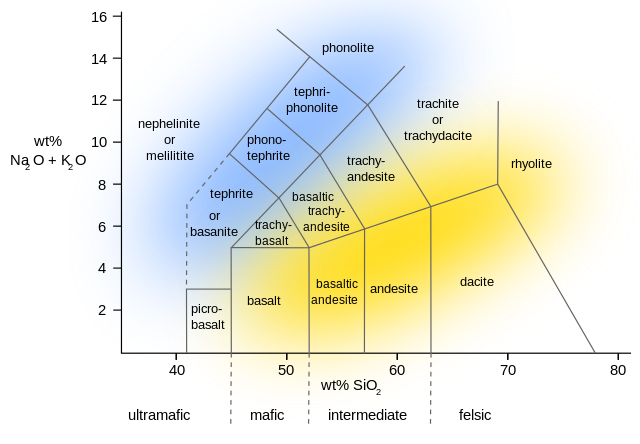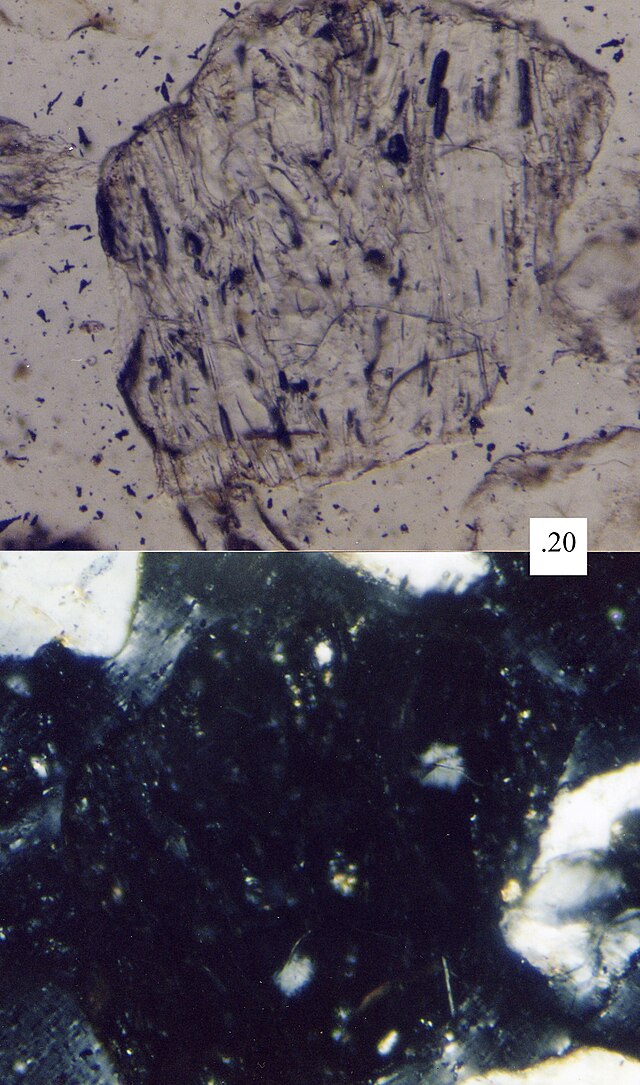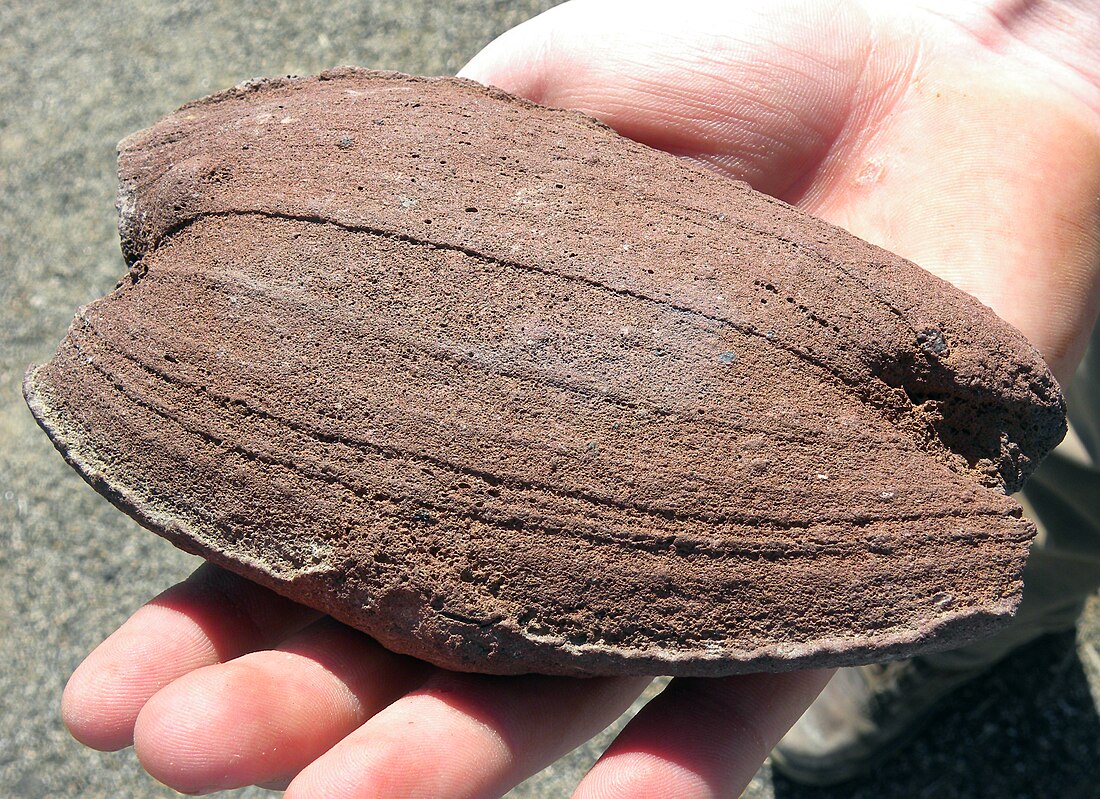Top Qs
Timeline
Chat
Perspective
Aphanite
Igneous rock composed of very small crystals invisible to the naked eye From Wikipedia, the free encyclopedia
Remove ads
Remove ads
Aphanites (adj. aphanitic; from Ancient Greek αφανης (aphanḗs) 'invisible') are igneous rocks that are so fine-grained that their component mineral crystals are not visible to the naked eye[2] (in contrast to phanerites, in which the crystals are visible to the unaided eye). This geological texture results from rapid cooling in volcanic or hypabyssal (shallow subsurface) environments. As a rule, the texture of these rocks is not the same as that of volcanic glass (e.g., obsidian), with volcanic glass being non-crystalline (amorphous), and having a glass-like appearance.[3]



Aphanites are commonly porphyritic, having large crystals embedded in the fine groundmass, or matrix. The larger inclusions are called phenocrysts. They consist essentially of very small crystals of minerals such as plagioclase feldspar, with hornblende or augite, and may contain also biotite, quartz, and orthoclase.[2]
Remove ads
Common rocks that can be aphanitic
References
Wikiwand - on
Seamless Wikipedia browsing. On steroids.
Remove ads
